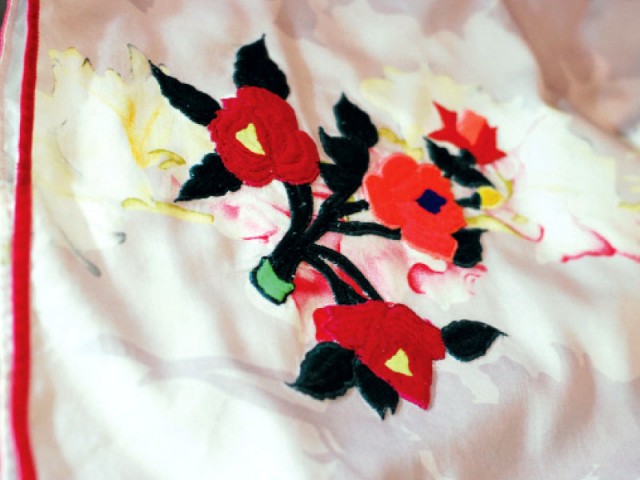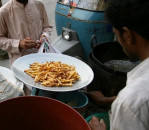Traditionally modern: Keeping the vibrant culture alive, through fashion
Enterprising designer from G-B showcases ethnic prints to promote her region .

Ethnic motifs and prints have become an integral part of the mainstream apparel, breaking into the local as well international fashion markets.Whether it is intricate embroidery or unusual cuts, there is always some history to the indigenous design which remains somewhat undiscovered.
Laila Ashraf, a young fashion designer from Astore, Gilgit-Balitistan (G-B), is promoting the rich Astori culture through her brand which goes by her first name. “I want to promote Astori culture through my designs. Most people just know about the area for its scenic beauty yet nothing about the cultural landscape and the traditions,” said the designer at her second exhibition in the capital.
She added that often designers exploit the culture by taking it to international fashion hubs and selling it under their own brand labels. “This is my way of telling people about our vibrant culture and keeping it alive.”
While she has revisited the original embroidery techniques from the area in the embellished ethnic pieces, her collection also leans towards the quirky, eclectic and playful. She has introduced large floral prints in vibrant colours, which is a signature pattern found in the area.
Emphasising on both the cuts and the embroidery, she has incorporated the flowy “shiley” style into ponchos and kafkans, which the designer said have originated from the area. She has also introduced some party wear gowns in the collection.
The indigenous embroideries include the traditional “pashali” which is a thick woolen stitch as well as fine shadow work found in clothes along the Seraiki belt. Some of the pieces also come with chunky, colourful and beady accessories.
The fabrics are mainly pure silks, pure cottons and lawns for casual wear while the designer has revived some traditional materials such as moonlight, jamawar and shanghai in the semi-formal pieces. Jackets adorned by embroidery or accessories and stitched over fancy shirts is another feature of the traditional attire. “The clothes are for everyone, I haven’t kept a certain body type or social class in mind while designing them, which is why the prices are so affordable,” said the designer. The prices start from Rs1,200 and go up to Rs7,000 with special discounts.
While the designer operates from home, the clothes are currently displayed at House 743, Street 10, Sector G-9/3.
Published in The Express Tribune, July 22nd, 2014.



















COMMENTS
Comments are moderated and generally will be posted if they are on-topic and not abusive.
For more information, please see our Comments FAQ